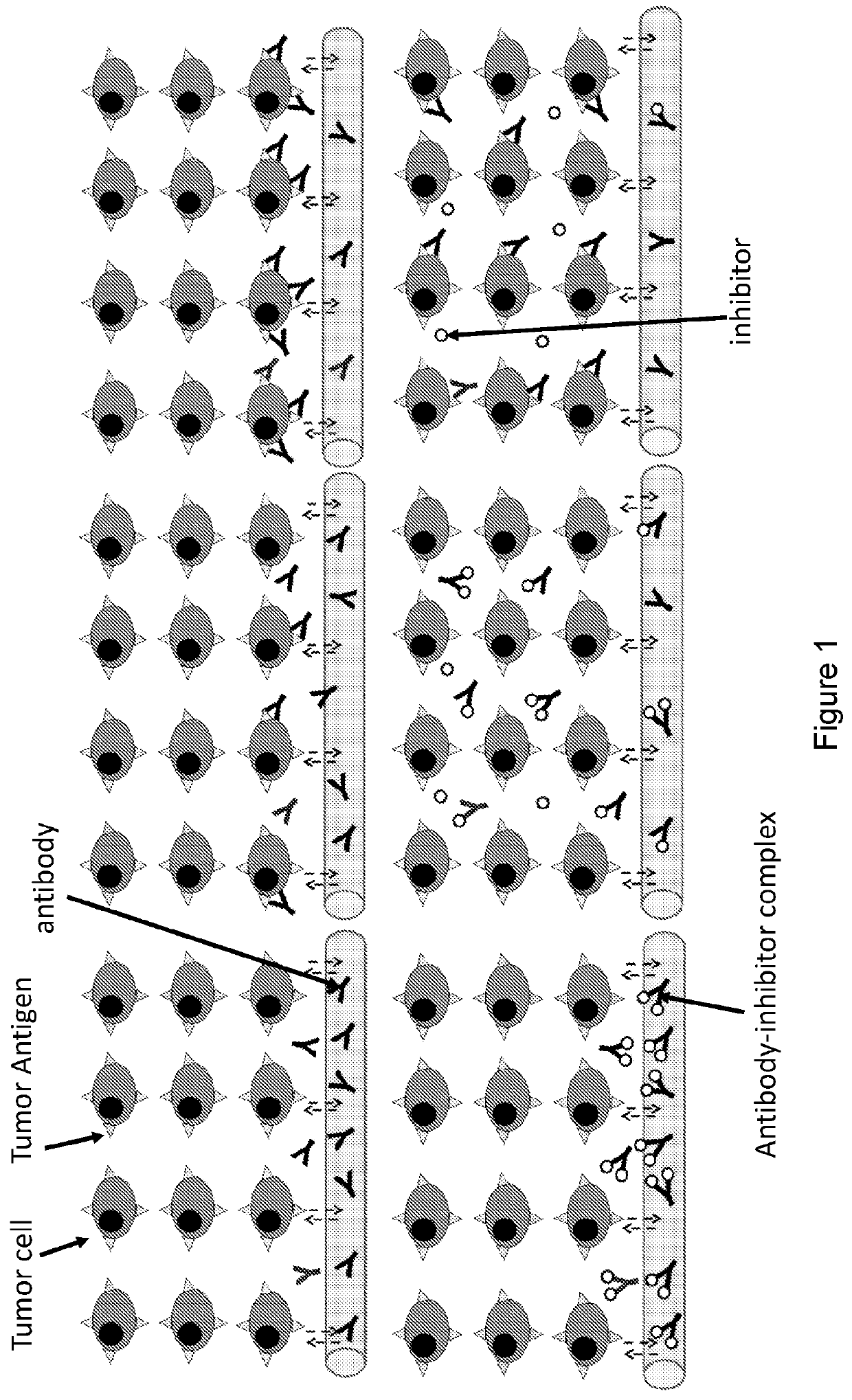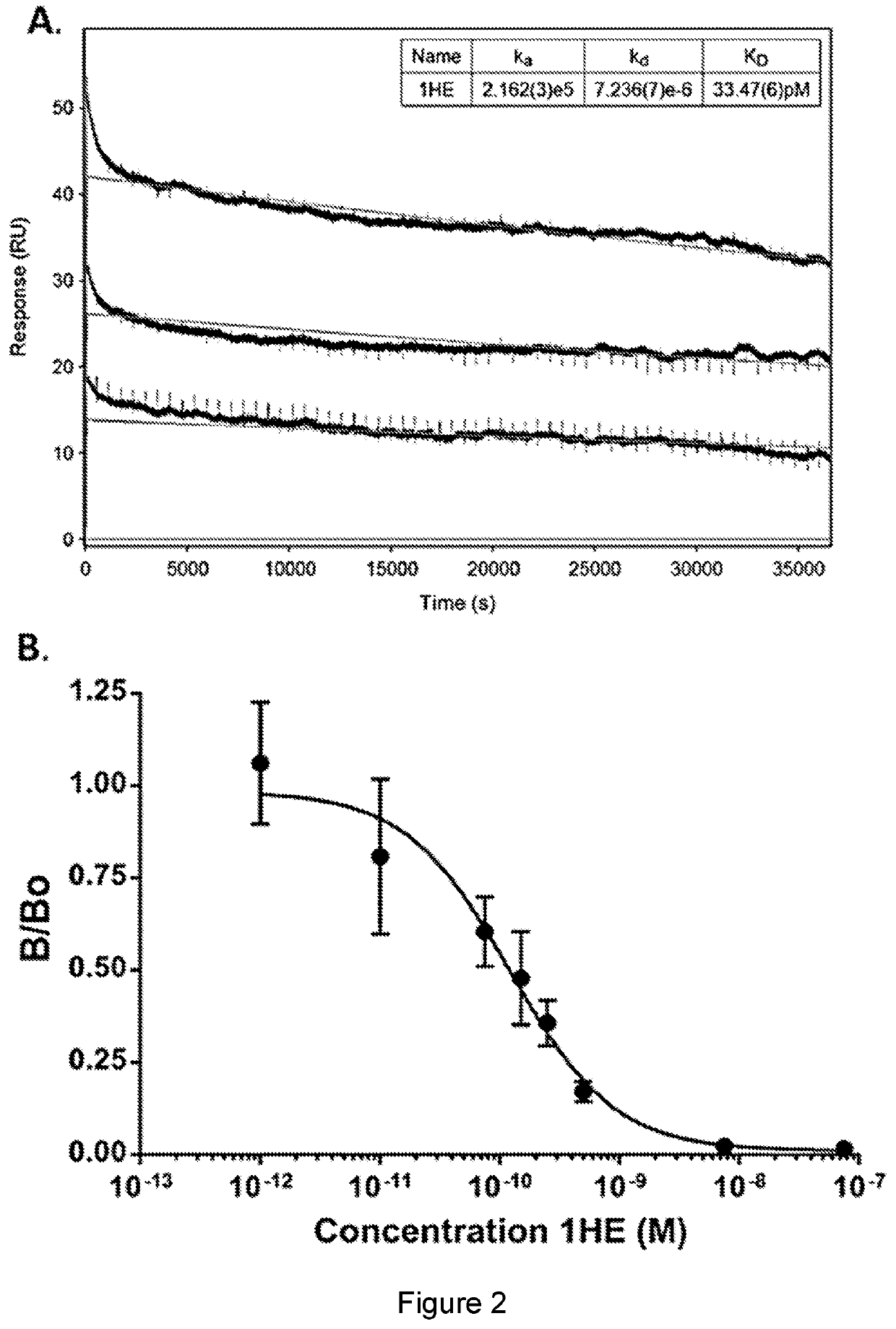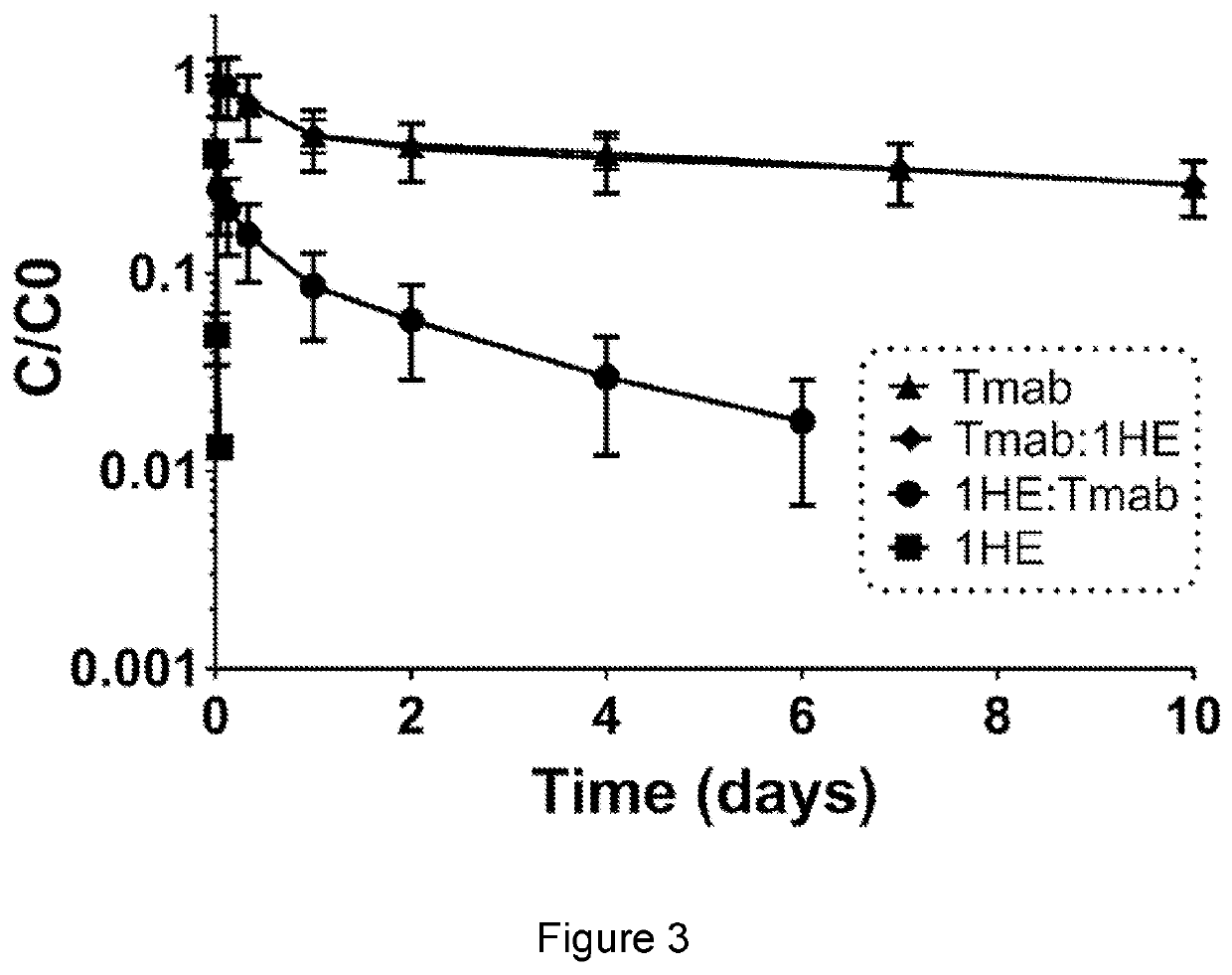Compositions and methods for improving tumor penetration of tumor specific antibodies
a technology of specific antibodies and tumors, applied in the field of compositions and methods for improving tumor penetration of tumor specific antibodies, can solve the problems of poor antibody uptake and penetration in solid tumors, limited penetration of high-affinity antibodies, and limited efficacy, so as to improve tumor penetration of trastuzumab, improve antibody tumor distribution, and improve survival
- Summary
- Abstract
- Description
- Claims
- Application Information
AI Technical Summary
Benefits of technology
Problems solved by technology
Method used
Image
Examples
example 1
[0064]Materials and Methods
[0065]Expression and Purification of 1HE
[0066]The amino acid sequence for 1HE was obtained from the original publication by Alvarez-Reuda and colleagues (Alvarez-Rueda et al., Vaccine, 2009. 27(35): p. 4826-4833) (Sequence provided as SEQ ID NO:2). A codon optimized DNA sequence for E. coli expression was synthesized by GeneArt (ThermoFisher, Rockford, Ill.), (SEQ ID NO:3) ligated into the plasmid pET22b(+) (Millipore-Sigma, 69744) at the XhoI and NdeI restriction enzyme sites and transformed into the E. coli strain BL21(DE3). To express 1HE, cells containing the DNA construct are struck onto an LB agar plate containing 100 μg / ml of ampicillin and incubated at 37° C. for 18 hours. Using a sterile pipet tip, a single colony is lifted and transferred into a 10 ml starter culture of LB media. The starter culture is transferred to a shaker incubator at 37° C. overnight. The starter culture is then transferred into a 1 L seeder culture of terrific broth and gro...
example 2
[0100]This example describes the effects of 1HE on plasma pharmacokinetics on TDM1 and also shows the timecourse of 1HE dissociation from trastuzumab (through use of radiolabeled 1HE).
[0101]Swiss-Webster mice (n=5 / group) were injected with T-DM1 with a 400 uCi / kg tracer dose of 125I-TDM1. 15 minutes after TDM1 injection, 1HE was administered intravenously in a 10:1 molar ratio, consistent with the dose used for the NCI-N87 efficacy study. The T-DM1 control was administered a saline vehicle of equivalent volume 15 minutes after T-DM1 injection. As shown in FIG. 8, co-administration of 1HE did not significantly alter the plasma pharmacokinetics of T-DM1.
[0102]Amine modified dynabeads were covalently coupled with trastuzumab following manufacturers recommendations. 1HE was radiolabeled with 125I with a modified chloramine-T procedure. 125I-1HE with 0.1% BSA / PBS was incubated for 1 hour with trastuzumab modified beads with 3 subsequent washes with 0.1% BSA / PBS. Bound radioactivity was a...
example 3
[0104]This examples describes generation of mutants of 1HE and characterization of the mutants.
[0105]Methods
[0106]Phage Library Construction
[0107]One nanogram of 1HE DNA with NdeI and XhoI restriction digestion overhangs was used as the template DNA for error-prone polymerase chain reaction (PCR). PCR primers were designed with sF1 restriction digest overhangs for ligation of the PCR product into the pComb3XSS phagemid plasmid (Addgene, Cambridge, Mass., 63890). Error-prone PCR buffer conditions are provided in Table 1. Error-prone PCR product was obtained following 14-cycles of denaturation at 94° C. for 1 minute, annealing at 52° C. for 1 minute, and extension at 68° C. for 3 minutes with a final 10-minute extension. PCR product (1 μg) was ligated into the pComb3XSS phagemid (2 μg) and transfected into TG1 E. coli cells (Lucigen, Middleton, Wis., 60502) through electroporation. Following electroporation, transformed bacteria were serially diluted up to 104 and spread over lysogeny...
PUM
| Property | Measurement | Unit |
|---|---|---|
| volume | aaaaa | aaaaa |
| pH | aaaaa | aaaaa |
| molar ratio | aaaaa | aaaaa |
Abstract
Description
Claims
Application Information
 Login to View More
Login to View More - R&D
- Intellectual Property
- Life Sciences
- Materials
- Tech Scout
- Unparalleled Data Quality
- Higher Quality Content
- 60% Fewer Hallucinations
Browse by: Latest US Patents, China's latest patents, Technical Efficacy Thesaurus, Application Domain, Technology Topic, Popular Technical Reports.
© 2025 PatSnap. All rights reserved.Legal|Privacy policy|Modern Slavery Act Transparency Statement|Sitemap|About US| Contact US: help@patsnap.com



